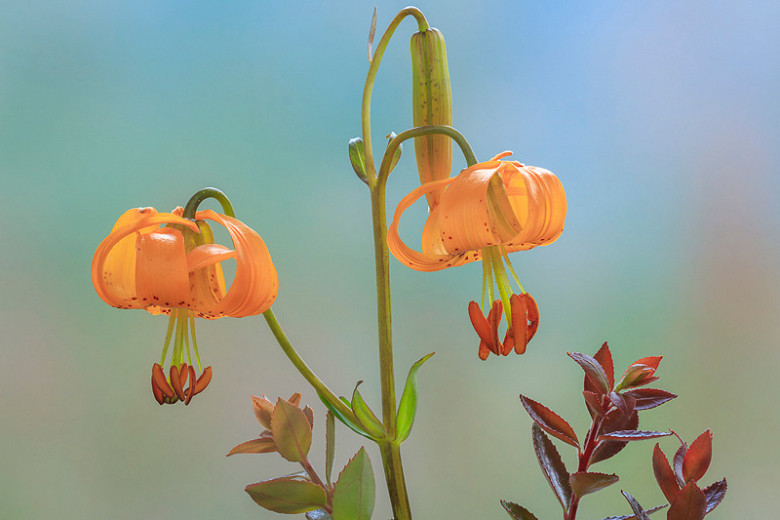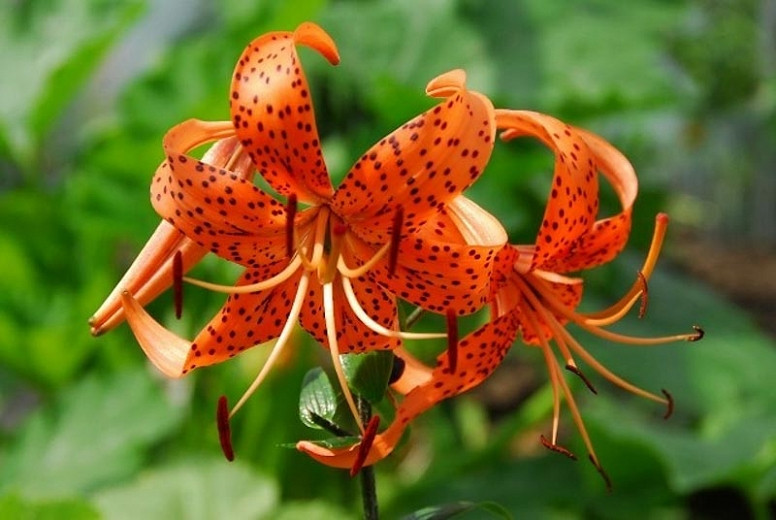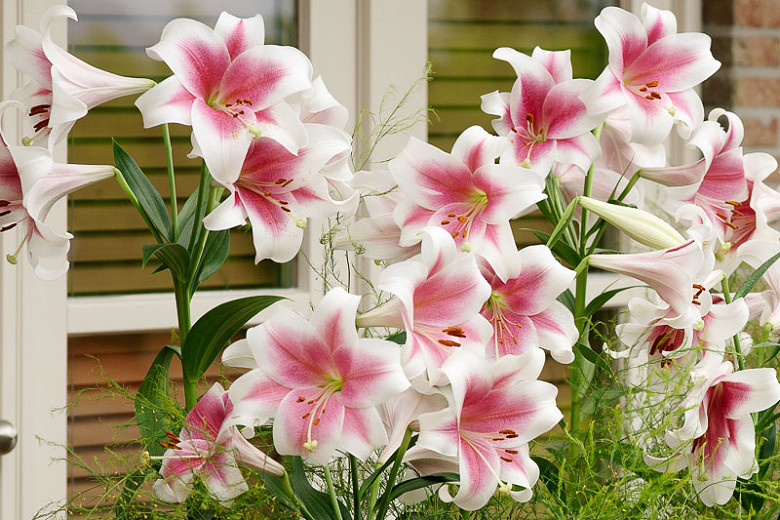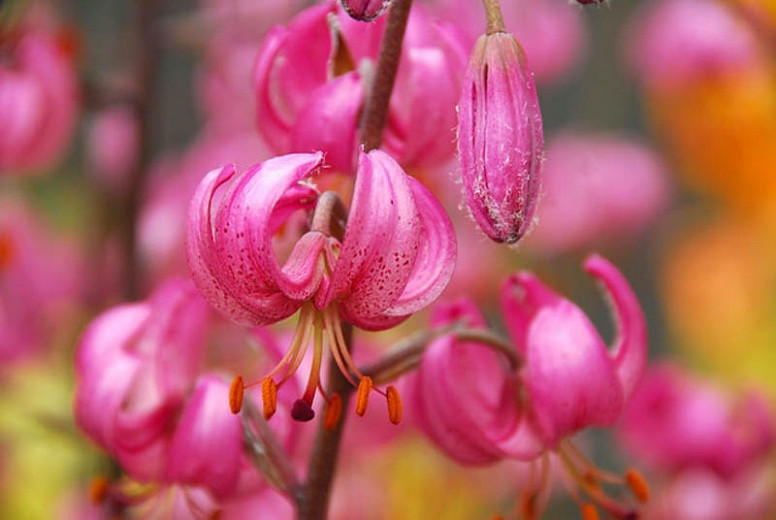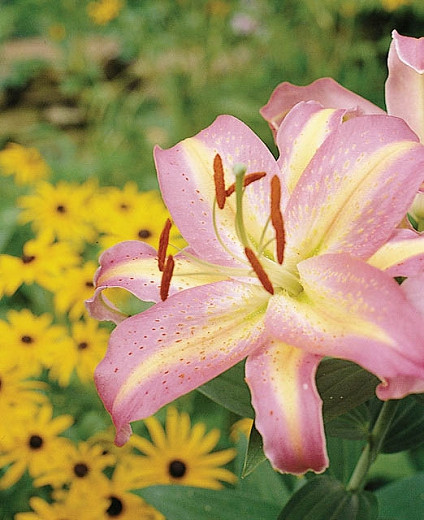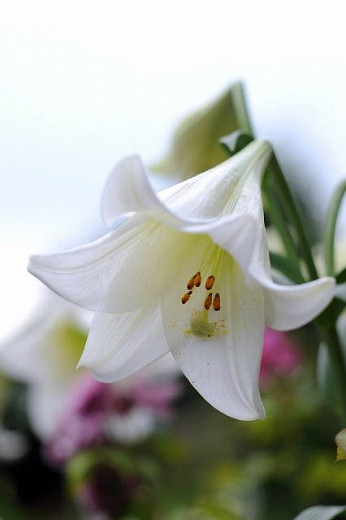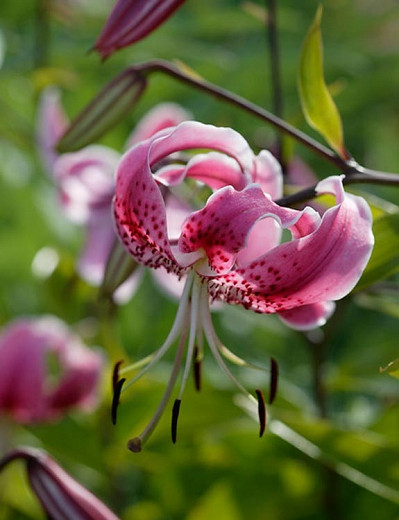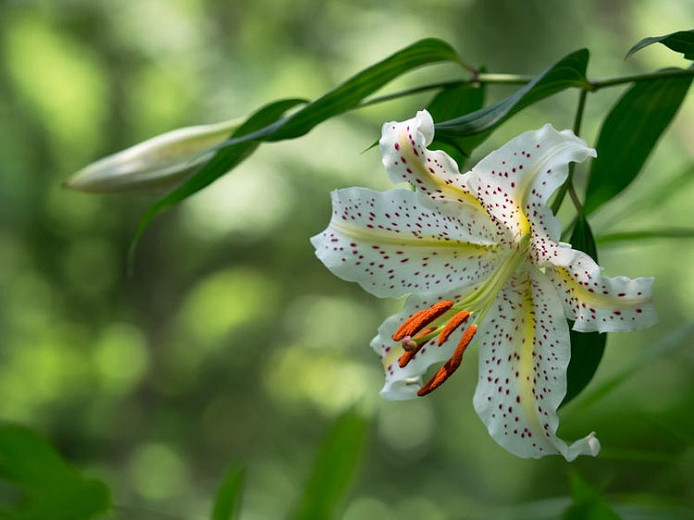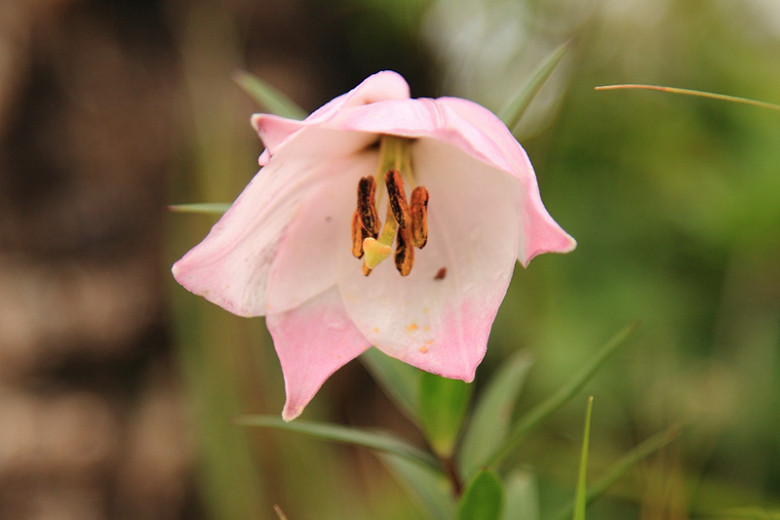Lilium columbianum (Columbia Lily)
Prized for its long flowering period, Lilium columbianum (Columbia Lily) is an erect bulbous perennial lily with an unbranched stem bearing whorls of lance-shaped leaves, 2-4 in. long (5-10 cm). From early summer to fall, depending on location, striking pendant to nodding flowers, 2 in. long (6 cm), ranging in color from yellow to orange to reddish, are loosely arranged in a bracteate raceme. Resembling a Turk's cap with sepals and petals reflexed, the ravishing blossoms are adorned with a profusion of reddish to maroon spots. Six exerted stamens add further appeal. Fertile flowers produce seed capsules, which contain numerous small flattened seeds. These are wind dispersed when the capsule opens. Amazingly decorative, Lilium columbianum is quite prolific as mature bulbs can produce up to 20 blossoms per stem. Native to western North America, Lilium columbianum can be found in prairies, forest edges, forest openings, and meadows. Its large white ovoid bulb has been used for food (boiled, steamed, dried, and eaten raw), as a spice, and in soups by many Pacific Northwest tribes. Columbia Lily is not fragrant. Attractive to butterflies and hummingbirds, this lily variety comes back year after year. It is an eye-catching addition to the garden.
- Grows up to 2-4 ft. tall (60-120 cm) and 12-18 in. wide (30-45 cm).
- Performs best in full sun or part shade in moist, fertile, acidic to neutral well-drained soils.
- Propagated using bulb scales or offsets or seed. Sow outdoors in summer for germination the following spring. Seedlings take several years to flower.
- Toxic to cats (though not for dogs or any known species).
- This Lily is a member of the Species and cultivars of species Division (IX) which includes all species and their subspecies, varieties, forms, and cultivars selected therefrom (excluding those derived from formosanum, longiflorum, philippinense, and wallichianum). There are 9 different types of lilies classified by the Royal Horticultural Society. And they are all real eye-catchers!
- Native to western North America, including British Columbia, California, Idaho, Oregon, and Washington.
Requirements
| Hardiness | 5 – 9 |
|---|---|
| Climate Zones | 3, 3A, 3B, 4, 5, 6, 7, 14, 15, 16, 17, 18, 19 |
| Plant Type | Bulbs, Perennials |
| Plant Family | Lilium – Lilies |
| Exposure | Full Sun, Partial Sun |
| Season of Interest | Summer (Early,Mid,Late)Fall |
| Height | 2' – 4' (60cm – 120cm) |
| Spread | 1' – 2' (30cm – 60cm) |
| Spacing | 12″ – 18″ (30cm – 45cm) |
| Water Needs | Average |
| Maintenance | Low |
| Soil Type | Loam, Sand |
| Soil pH | Acid, Neutral |
| Soil Drainage | Moist but Well-Drained |
| Characteristics | Showy |
| Native Plants | United States, California, Pacific Northwest, Idaho, Oregon, Washington |
| Attracts | Bees, Birds, Butterflies, Hummingbirds |
| Garden Uses | Beds and Borders |
| Garden Styles | Informal and Cottage, Prairie and Meadow |
